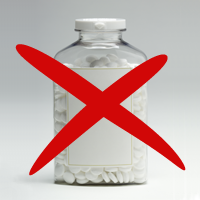Africa Can't Afford ART for its HIV Patients
The cost of treating HIV in nine nations in Africa with antiretroviral drugs through 2050 is an estimated $261 billion, far more than the $98 billion it will cost to sustain current levels of treatment, a Harvard study found.

The nine sub-Saharan African countries, which account for 75 percent of the continent’s HIV burden, are unlikely to be able to afford the future cost of needed treatment, a new study by Harvard researchers said. They estimate billions of dollars in funding shortfall by 2050, if innovative financing can’t be found.
“The HIV epidemic is far from over,” said Rifat Atun MD, the study’s lead author and a professor of global health systems at the Harvard T.H. Chan School of Public Health. “The magnitude of funding needed to sustain the HIV fight is very large and the consequences of complacency larger.”
Atun and colleagues estimated that between 2015 and 2050 it would cost between $98 billion to maintain the current level of prevention and antiretroviral treatment (ART) and $261 billion to provide ART and prevention for all the Africans in those nine countries who need it. “Future obligations are too substantial for SSA [sub-Saharan African] countries to be met from domestic sources alone,” the modeling study said.
Almost 70 percent of the 37 million HIV-infected people worldwide live in sub-Saharan Africa and less than half of them have received ART treatment, according to the study. South African, Zimbabwe, Zambia, Malawi, Kenya, Uganda, Tanzania, Nigeria, and Ethiopia are the nine SSA countries facing the greatest HIV burden. It affects more than 10 percent of the populations in South Africa, Zimbabwe, Zambia and Malawi, the co-authors reported.
There also is a cost to delay. By investing more in HIV prevention and treatment in the near future, the future incidence and prevalence will be reduced which will lower future costs, the study added. “These expenditures need to be funded from somewhere,” the co-authors said.
The most important source of funding for the war against HIV is domestic spending, but only eight of the 48 sub-Saharan African countries have reached the goal of allocating 15 percent of their budgets to health. By improving the efficiency of their health systems, many of these countries could provide more HIV treatment without increasing their budgets, the study explained.
Atun and his colleagues also recommended several other potential sources of increased funding ranging from debt guarantees by the World Bank and the Global Fund to social impact bonds to continued support from organizations such as the International Finance Facility for Immunization.
“The problem of predictable and sustainable funding must be resolved,” Atun said. “There is an ethical responsibility to continue financing for those receiving ART, and not abandon them to death.”
The study was published online March 6 in BMJ Open.